The Anatomy of a High-Impact Sales Presentation
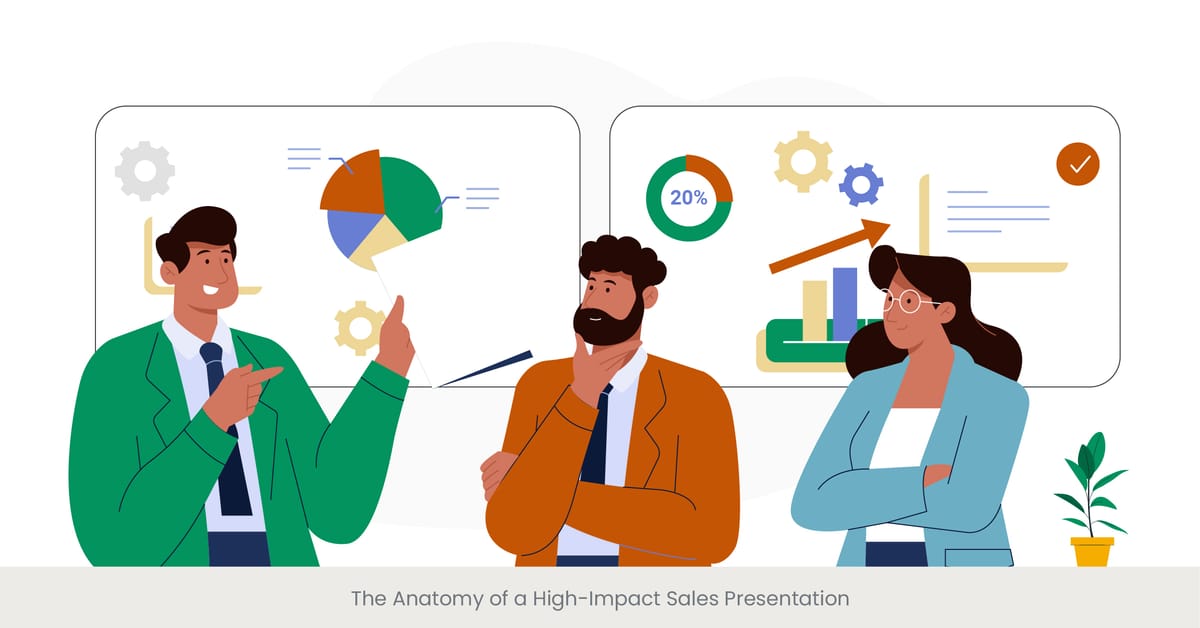
Importance of First Impressions
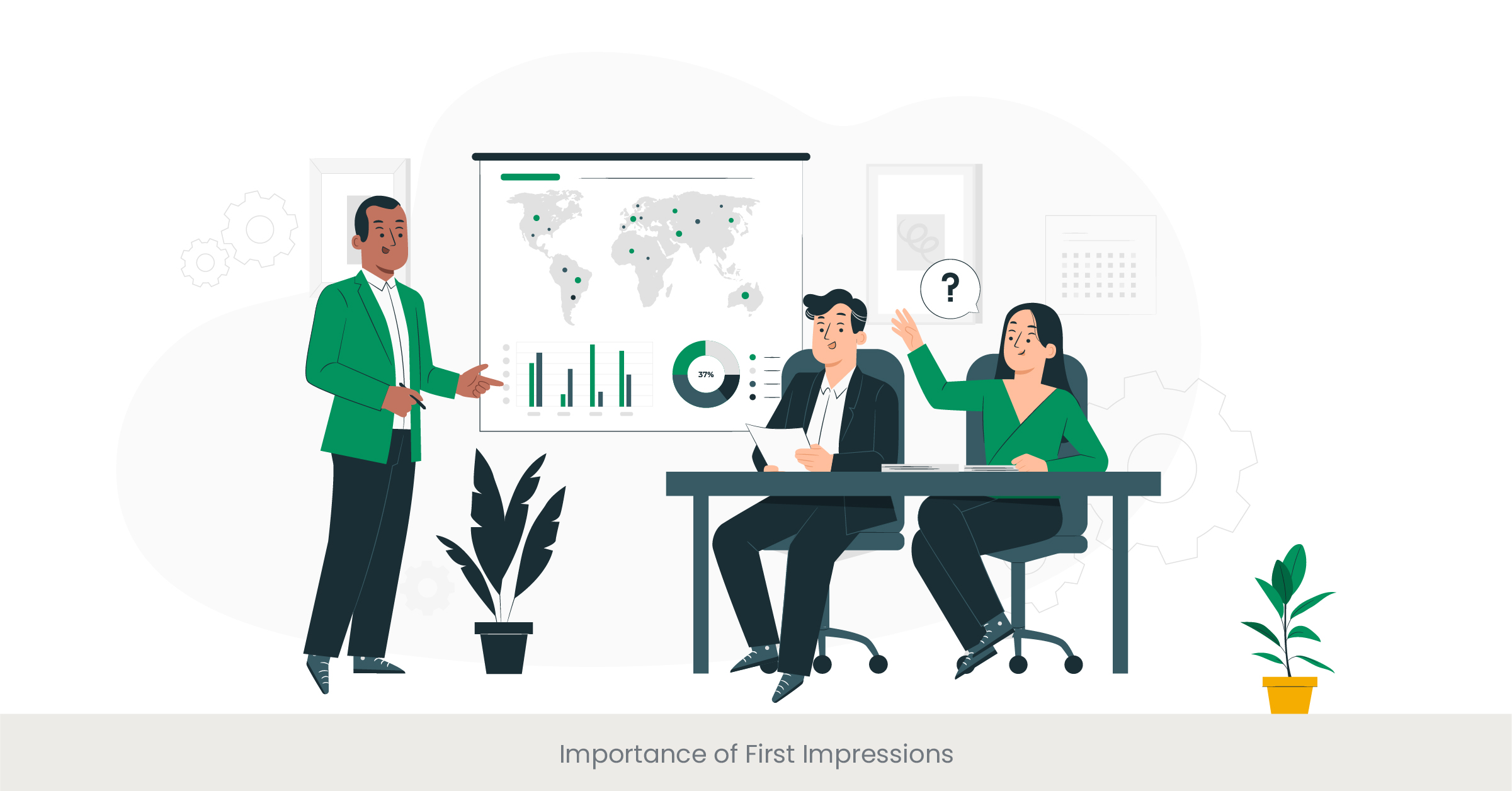
The Critical Gateway to Engagement
The power of first impressions cannot be overstated, especially in the high-stakes world of sales. Within the first few moments of a sales presentation, prospects subconsciously form an opinion about the presenter and, by extension, the product or service being offered. This initial judgment is often based on the presenter's appearance, demeanor, and the opening lines of the presentation. An impactful first impression can set the tone for the entire presentation, making it a critical gateway to engagement. By understanding the elements that contribute to a positive first impression, such as a confident posture, a warm smile, and a compelling introduction, sales professionals can significantly increase their chances of success.
Building a Foundation for Success
The significance of first impressions extends beyond mere aesthetics; it is deeply rooted in human psychology. Studies have shown that individuals are more likely to be receptive to messages delivered by people they find likable and trustworthy from the outset. This receptivity opens the door to a more effective sales presentation, as the audience becomes more engaged and open to discussion. Furthermore, a strong first impression lays the groundwork for establishing a rapport with the audience, making it easier to navigate the sales process and address potential objections. It is the first step in crafting a narrative that resonates with the audience, aligning the sales pitch with their needs and interests.
Real-World Examples of Impactful First Impressions
The importance of first impressions is illustrated through numerous success stories across various industries. For instance, a sales team at a leading tech company revamped their presentation approach by focusing on making a dynamic first impression. They incorporated storytelling into their opening remarks, shared customer success stories, and utilized visually appealing visuals. This approach not only captivated the audience's attention but also increased their overall sales conversion rate by 30%. Another example comes from the fashion retail sector, where sales associates were trained to greet customers with personalized messages, directly impacting the store's foot traffic and sales numbers.
Evidence Backs the First Impression Strategy
The effectiveness of focusing on first impressions is supported by research and data. A study published in the "Journal of Marketing" found that presentations that started with a strong, positive first impression saw a 20% higher persuasion rate than those that did not. Additionally, according to a report by Salesforce, 85% of customers say their experience in the first few minutes of a sales presentation significantly impacts their decision-making process. These findings underscore the crucial role of first impressions in the sales landscape, highlighting the need for sales professionals to meticulously plan and execute their presentation openings.
Structuring Your Presentation for Success

Laying the Groundwork for a Winning Presentation
The structure of a sales presentation is akin to the blueprint of a building; it dictates the flow, ensures stability, and enhances the impact of the content presented. A well-structured sales presentation outline guides the prospect through a journey from recognizing a need to seeing your product or service as the solution. The key to success lies in a clear, logical, and engaging progression of ideas, starting with a compelling introduction, moving through the body where the main points are elaborated, and concluding with a powerful call to action. This strategic arrangement keeps the audience's attention focused and facilitates a deeper understanding of the value proposition.
The Pillars of Effective Presentation Structure
A robust sales presentation structure is built on several foundational elements: an engaging opener, a clearly defined agenda, the main content organized around key benefits, and a memorable closing. Each element plays a crucial role in maintaining the flow and reinforcing the message. Starting with an agenda sets expectations and prepares the audience for what’s to come, acting as a roadmap for both the presenter and the listeners. This clarity from the outset helps in managing the audience's attention and engagement throughout the presentation.
Illustrating Structured Success Through Case Studies
The impact of a well-structured sales presentation is evident in numerous case studies across industries. For instance, a software company implemented a structured approach to their sales presentations, focusing on addressing common pain points in the first section, followed by solutions and customer success stories. This method resulted in a 40% increase in engagement during presentations and a 25% uplift in conversion rates. Another example is a financial services firm that adopted a storytelling format, weaving client testimonials and data-driven evidence throughout their presentation, which significantly enhanced their persuasive power and led to a record number of new client acquisitions.
Supporting Data on Presentation Structure Efficacy
Research underscores the importance of structure in presentation success. A study by the American Marketing Association revealed that presentations with a clear structure were 70% more likely to result in a sale. Further, data from HubSpot shows that presentations utilizing a problem-solution-benefit structure have the highest engagement and conversion rates. These statistics highlight the critical nature of careful planning and structuring of sales presentations to maximize impact and effectiveness.
Crafting a Compelling Opening

Setting the Stage for Success
The opening of your sales presentation is your first and perhaps most crucial opportunity to capture and hold the audience's attention. A compelling opening acts as a hook that intrigues your prospects and makes them eager to hear more. It should clearly articulate the value of your presentation and why it matters to your audience, setting the tone for everything that follows. The best openings often include a surprising fact, a provocative question, or a relatable anecdote that directly ties into the main message or theme of the presentation.
The Foundation of an Engaging Start
Understanding the psychology behind attention and interest is key to crafting an opening that resonates. Human attention is naturally drawn to stories, questions, or statements that challenge conventional wisdom or offer new insights. An effective opening leverages these elements, creating a moment of engagement that transitions smoothly into the body of the presentation. It’s not just about saying something memorable; it’s about immediately demonstrating the relevance and value of your presentation to the audience.
Real-World Examples of Effective Openings
The power of a compelling opening can be seen in successful sales presentations across various sectors. For example, a technology startup began their pitch with a personal story about the problem their product solves, immediately drawing investors into a narrative that was both emotional and relevant. This approach not only captivated the audience but also laid the groundwork for a presentation that ended in a successful funding round. Another instance involves a real estate agency that started presentations with interactive questions, engaging potential clients in a conversation about their dream homes, thereby personalizing the experience and fostering a connection from the outset.
Data Validates the Importance of Strong Openings
Research supports the effectiveness of compelling openings in sales presentations. According to a study by the Kellogg School of Management, presentations that started with a story had a 35% higher retention rate among audiences compared to those that began with facts or figures. Additionally, a survey conducted by Prezi found that 90% of successful sales are attributed to presentations that engage the audience emotionally from the beginning. These findings highlight the critical importance of crafting an opening that not only captures attention but also establishes a connection with the audience.
Storytelling in Sales: The Key to Connection
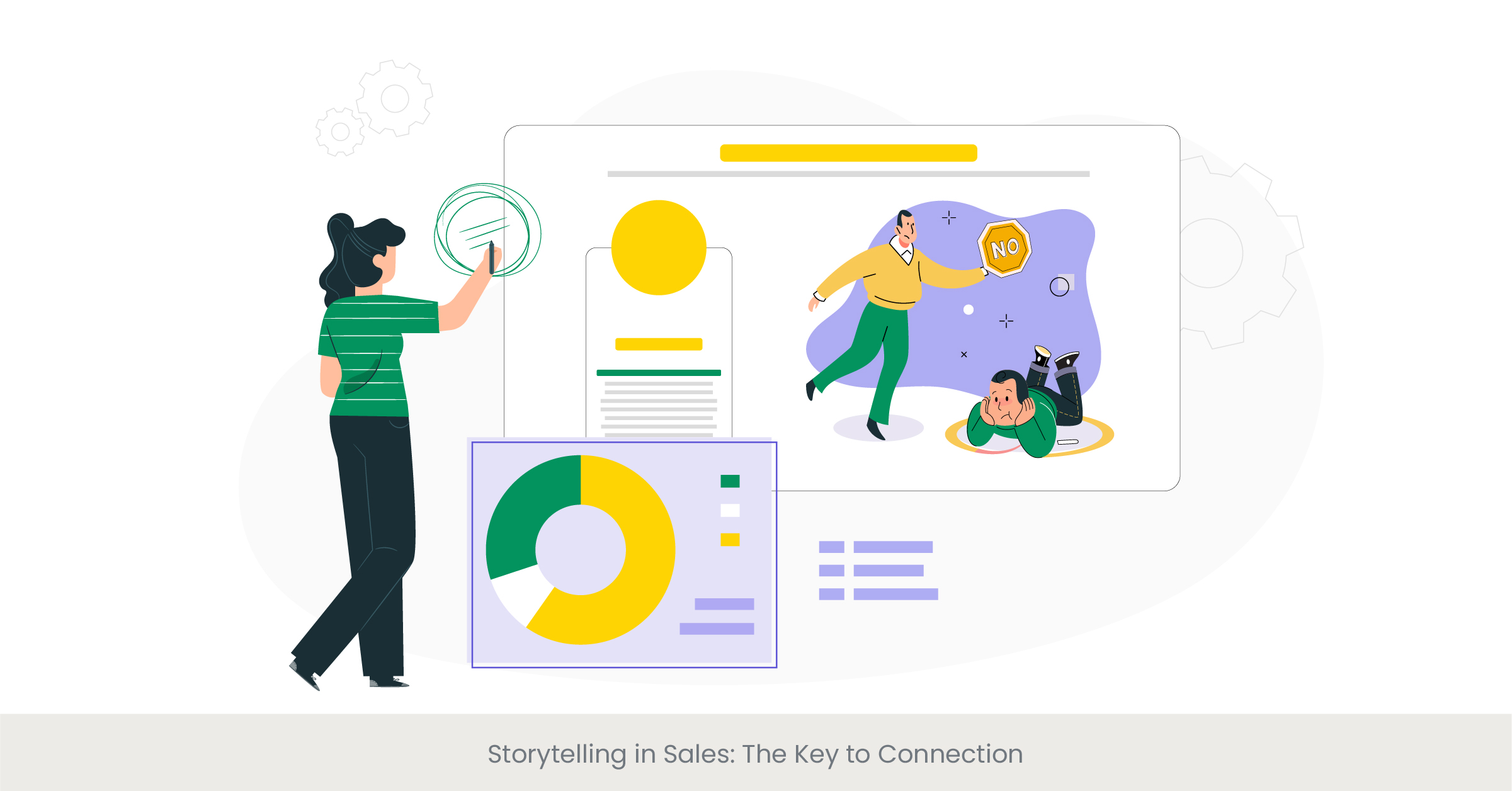
The Power of Narrative in Sales
Storytelling is an age-old method that resonates with humans on a fundamental level. In the context of a sales presentation, leveraging storytelling transforms your pitch from a mere transfer of information into an engaging narrative that captures the audience's imagination. It’s about weaving a story around your product or service, making it relatable and memorable. This narrative approach helps to humanize your brand, illustrating not just what you sell, but why it matters, thereby creating a powerful emotional connection with your prospects.
Roots and Relevance of Storytelling in Sales
The effectiveness of storytelling in sales lies in its ability to simplify complex ideas, making them accessible and appealing. Through stories, abstract concepts become tangible, benefits are illustrated vividly, and data becomes compelling. This technique anchors your message in the minds of your audience, making it more likely to stick. Moreover, storytelling aligns with how people naturally process and remember information, making your sales pitch not only heard but also felt and remembered.
Spotlight on Success: Storytelling in Action
Numerous other sales pitches and presentations have turned the tide in favor of products or services through effective storytelling. A notable example is a tech company that introduced its software solution through the journey of a fictional character facing challenges that the audience could relate to. This approach not only highlighted the software’s benefits but also elicited empathy, significantly boosting engagement and recall. Similarly, a nonprofit organization shared stories of individuals directly impacted by their work, dramatically increasing donations by making the cause personal and urgent to the audience.
Evidence Supporting Storytelling’s Impact
The strategic use of storytelling in sales is backed by substantial evidence. According to a study published in the "Journal of Consumer Psychology," narratives in sales presentations increase persuasion because they allow listeners to immerse themselves in the story, leading to a higher level of emotional engagement. Furthermore, a report by the Harvard Business Review highlights that presentations utilizing storytelling can increase conversion rates by up to 70%. These findings underline storytelling's critical role in not just capturing the audience's attention, but also in forging a deeper connection that facilitates persuasion and action.
Highlighting Benefits over Features

The Essential Shift from What to Why
In the realm of sales, the distinction between features and benefits plays a critical role in shaping the buyer's decision-making process. While features describe the characteristics or functions of a product or service, benefits convey the value and advantages that these features bring to the customer. Shifting the focus from what your product is to why it matters to your audience is key to creating a persuasive sales presentation. This approach resonates on a deeper level with potential customers by directly addressing their needs, challenges, and desires.
Understanding the Impact of Benefits-Led Presentations
A benefits-focused presentation taps into the emotional and practical needs of the audience, making your offering more appealing. It's about painting a picture of a better future enabled by your product or service, thereby making the abstract tangible. This method not only helps in distinguishing your offering from competitors but also aligns with the audience's motivation to seek solutions that improve their situation. The essence of focusing on benefits lies in its ability to foster a connection that goes beyond the product, touching upon the outcomes and experiences it enables.
Real-Life Applications: Benefits in the Spotlight
The effectiveness of prioritizing benefits over features is demonstrated across successful sales strategies. For example, an enterprise software company shifted its presentation focus to how their platform could increase operational efficiency and reduce costs for businesses, rather than just listing its technical specifications. This change led to a marked increase in customer engagement and sales closures. Another instance is seen in the automotive industry, where a company emphasized the safety and comfort their vehicles offered families, rather than just the technical advancements, resulting in a significant boost in consumer interest and sales.
The Proven Advantage of Highlighting Benefits
Research underscores the efficacy of a benefits-oriented approach in sales presentations. Studies indicate that presentations emphasizing benefits lead to a higher level of audience engagement and are more likely to result in a positive decision. According to a report by Nielsen, products that highlighted benefits in their sales pitch saw a 38% increase in purchase intent compared to those that focused on features. This data reinforces the importance of communicating the practical and emotional value of a product or service, ensuring that the presentation resonates with the audience’s needs and leads to successful outcomes.
The Role of Data and Evidence

Empowering Your Presentation with Credibility
In a world inundated with claims and offers, data and evidence stand out as pillars of trust and credibility in sales presentations. Incorporating relevant statistics, research findings, and case studies not only substantiates your claims but also demonstrates a deep understanding of the market and the specific challenges your prospects face. This evidence-based approach appeals to the rational decision-making process of your audience, providing them with concrete reasons to believe in the value of your product or service.
Foundations of a Data-Driven Approach
The strategic use of data in sales presentations involves more than just presenting numbers; it's about telling a story with those numbers. The key is to select data that directly supports your value proposition, making the benefits of your offering indisputable. Whether it’s showcasing market research, customer success metrics, or comparative studies, the data should be presented in a clear, digestible format that reinforces your message. This methodology not only builds confidence in your proposition but also addresses potential skepticism by grounding your presentation in verifiable reality.
Success Stories: Data as the Hero
The impact of integrating data and evidence into sales presentations can be seen across various industries. A B2B tech company leveraged data from industry reports and customer testimonials to highlight the efficiency gains and cost savings their solution provided, leading to a notable increase in engagement and conversion rates. In the healthcare sector, a pharmaceutical company used clinical trial results to underscore and demonstrate the efficacy of their product, effectively addressing healthcare professionals' concerns and increasing adoption rates.
The Quantifiable Benefits of a Data-Enhanced Presentation
Research supports the significant role of data in influencing purchasing decisions. A study published in the "Journal of Marketing" revealed that sales presentations incorporating data and evidence were 65% more likely to result in a sale than those relying on anecdotal or generic content. Furthermore, a survey by Forbes indicated that executives are 42% more likely to be persuaded by presentations that include data-backed arguments. These findings underscore the necessity of weaving data and evidence into the fabric of your sales presentation to enhance its persuasiveness and credibility.
Designing Effective Visuals
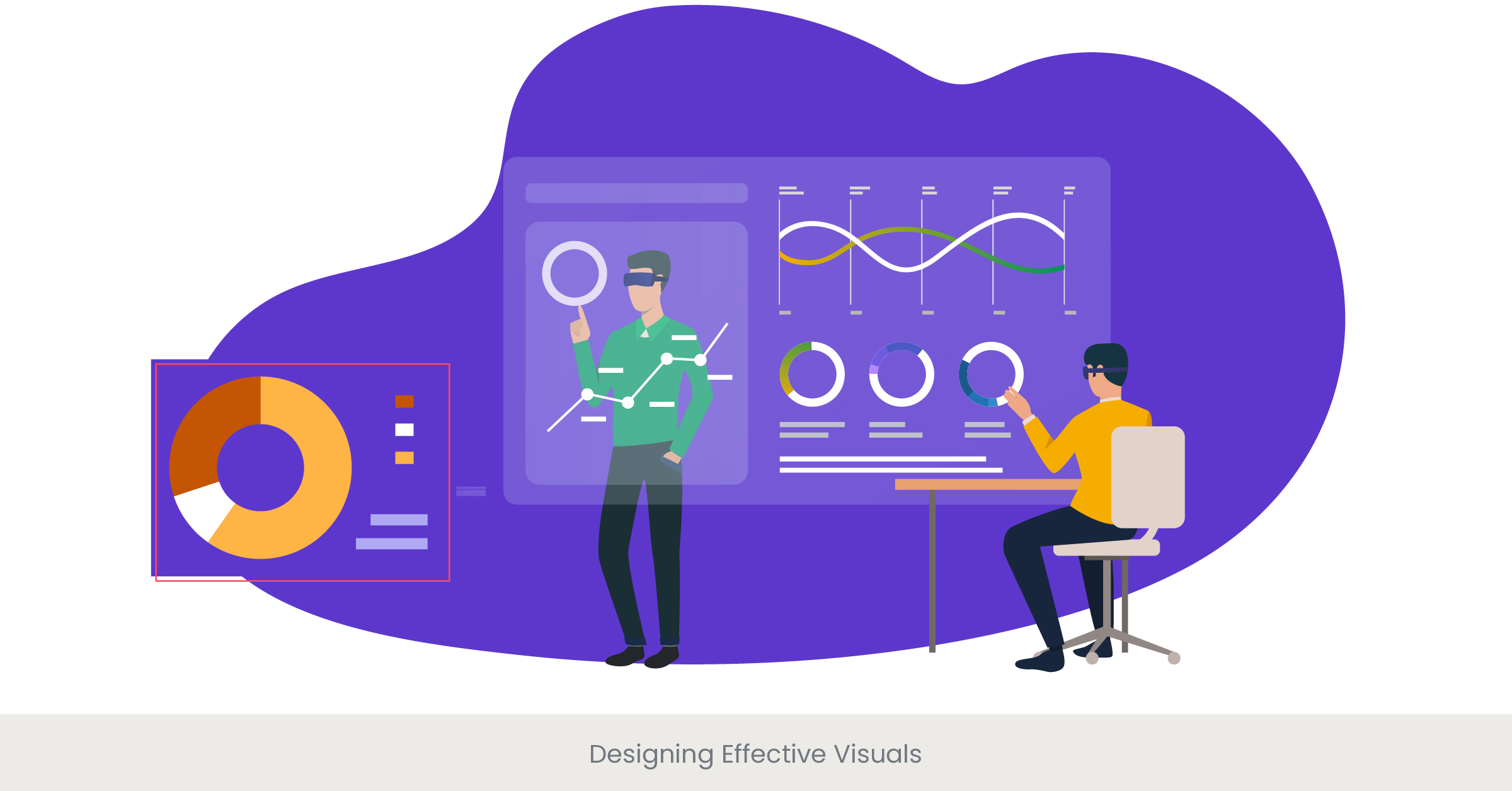
Visuals: The Unspoken Persuaders
In the landscape of sales presentations, visuals serve as powerful tools that can clarify, enhance, and emphasize your message. Effective visual design goes beyond mere decoration, playing a strategic role in conveying complex information succinctly and evoking emotional responses. Well-crafted visuals, such as charts, infographics, and relevant images, aid in storytelling, making your data and evidence more accessible and impactful. The key is to ensure that each visual element is purposefully integrated to support your narrative and drive home your key points.
Principles of Impactful Visual Design
Creating visuals that resonate involves more than aesthetic appeal; it requires a deep understanding of visual communication principles. Clarity is paramount—each visual should convey a single, clear message that directly supports your presentation's objectives. Consistency in design, such as the use of color schemes and typography, reinforces your brand and aids in cognitive processing. Moreover, relevance is crucial; every image, chart, or graph must be directly related to the content, avoiding unnecessary distractions. Embracing simplicity and focusing on data visualization can transform complex data sets into compelling narratives.
Showcasing Success Through Visuals
The effectiveness of incorporating high-quality visuals into sales presentations is well-documented across various sectors. A financial services company redesigned its sales deck to include more charts and graphs illustrating market trends and the performance of their services, resulting in a dramatic increase in client engagement and investment. Similarly, a consumer goods company utilized before-and-after visuals in their presentation to showcase the effectiveness of their product, significantly boosting consumer confidence and sales.
Validating the Power of Visuals with Data
Research validates the significant impact of visuals in enhancing comprehension and persuasion in sales presentations. According to the Social Science Research Network, 65% of people are visual learners, indicating that the majority of your audience will better understand and retain information presented visually. A study by the Wharton School of Business found that presentations with visuals were up to 50% more persuasive than those without. These statistics highlight the indispensable role of visuals in crafting a memorable and effective sales presentation.
Engaging Your Audience Throughout
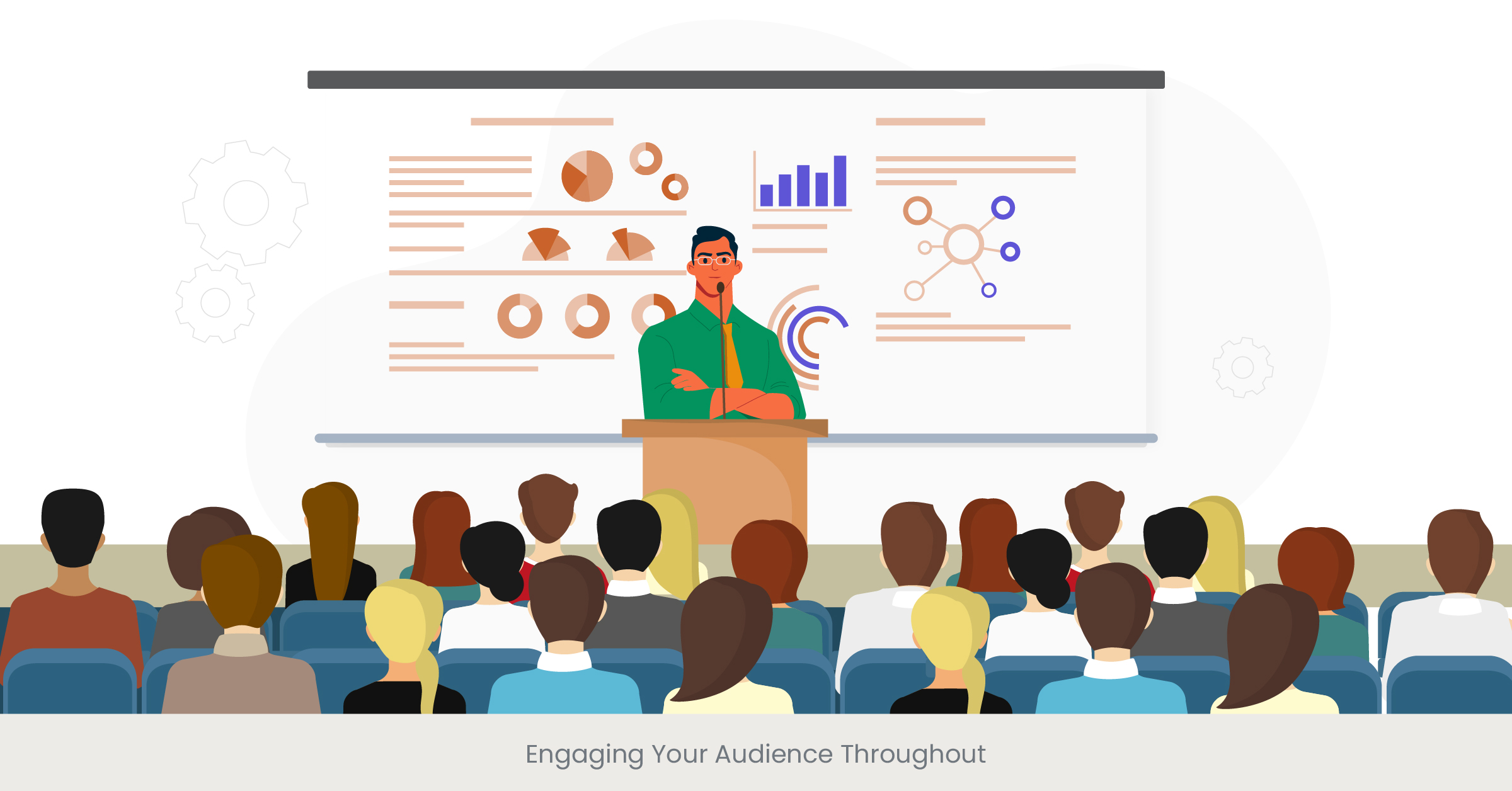
Crafting an Interactive Experience
The key to sustained engagement in sales presentations lies in transforming the audience from passive listeners to active participants. This can be achieved through various techniques such as posing thought-provoking questions, incorporating audience polls, or facilitating short discussions. These interactive elements not only break up the monotony of a one-way presentation but also provide valuable insights into the audience's thoughts and preferences, allowing for a more tailored and impactful delivery.
Leveraging the Power of Pacing and Pause
Effective engagement also relies on the pacing of your presentation. Varied pacing, along with strategic pauses, can significantly enhance audience interest and comprehension. Fast pacing can convey enthusiasm and urgency, while a slower pace allows key points to resonate and sink in. Pauses, used effectively, can underscore important messages and give the audience time to digest information, fostering a deeper connection with the content.
Real-World Examples of Audience Engagement
Examples abound of how engagement strategies have transformed sales presentations. A tech company, for example, integrated live demos and interactive Q&A sessions into their presentation, resulting in a notable increase in audience participation and post-presentation inquiries. Another instance is a marketing firm that used storytelling and audience participation exercises to illustrate their points, making the presentation not only memorable but also highly persuasive.
The Impact of Engagement: Supported by Data
The effectiveness of audience engagement techniques is well-supported by data. A study conducted by Forbes showed that presentations incorporating interactive elements had a 50% higher retention rate compared to traditional, lecture-style presentations. Additionally, research from Harvard Business Review suggests that engaging presentations can increase the likelihood of a successful outcome by up to 30%. These findings highlight the critical role of engagement in not only capturing but also maintaining the audience’s attention throughout the sales presentation.
Handling Objections Gracefully
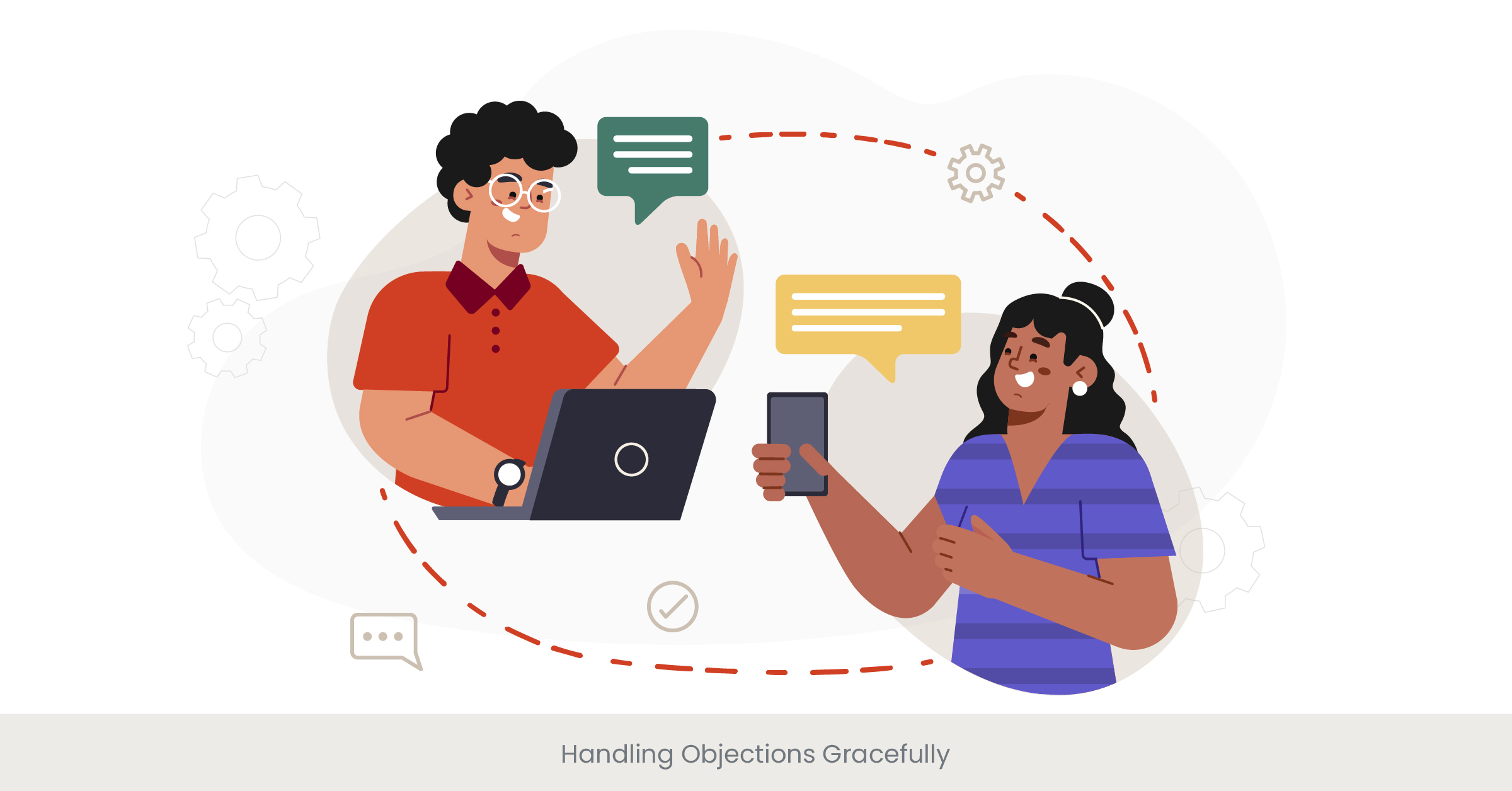
Turning Challenges into Opportunities
The moment an objection arises during a sales presentation, it represents not just a challenge but an opportunity—an opportunity to address concerns directly, clarify misunderstandings, explain and reinforce the strengths of your product or service. The key to handling objections gracefully lies in listening actively, understanding the root of the concern, and responding with information and insights that alleviate these concerns. This approach transforms potential setbacks into moments of learning and persuasion, deepening the trust between you and your audience.
Strategies for Effective Objection Handling
Effective objection handling starts with anticipation. By preparing for common objections and integrating responses into your presentation, you can address concerns before they even arise. When objections do surface, acknowledge them respectfully and provide clear, concise, and factual responses. Utilizing storytelling and case studies can also be powerful, as they offer real-world evidence of how similar concerns have been successfully addressed. Moreover, turning objections into interactive discussions can further engage the audience, making them feel heard and valued.
Illustrative Success Stories
Companies across industries have leveraged objection handling to enhance their sales presentations. For example, a SaaS company, anticipating concerns about data security, proactively included a segment in their presentation detailing their robust security features and compliance certifications. This preemptive approach significantly reduced concerns and improved conversion rates. Similarly, a real estate agency used customer testimonials and success stories to address common objections about market volatility, reassuring potential buyers and increasing sales.
Data-Driven Insights on Objection Handling
Research underscores the importance of effective objection handling in the sales process. According to a study by the Sales Management Association, sales teams that excel at objection handling close more deals and at a 30% higher rate than those that don’t. Furthermore, data from HubSpot reveals that understanding and addressing specific customer objections increases the likelihood of purchase by up to 80%. These findings highlight the critical role of objection handling in not only navigating challenges but also in building trust and moving closer to a sale.
Memorable Conclusions and Calls to Action
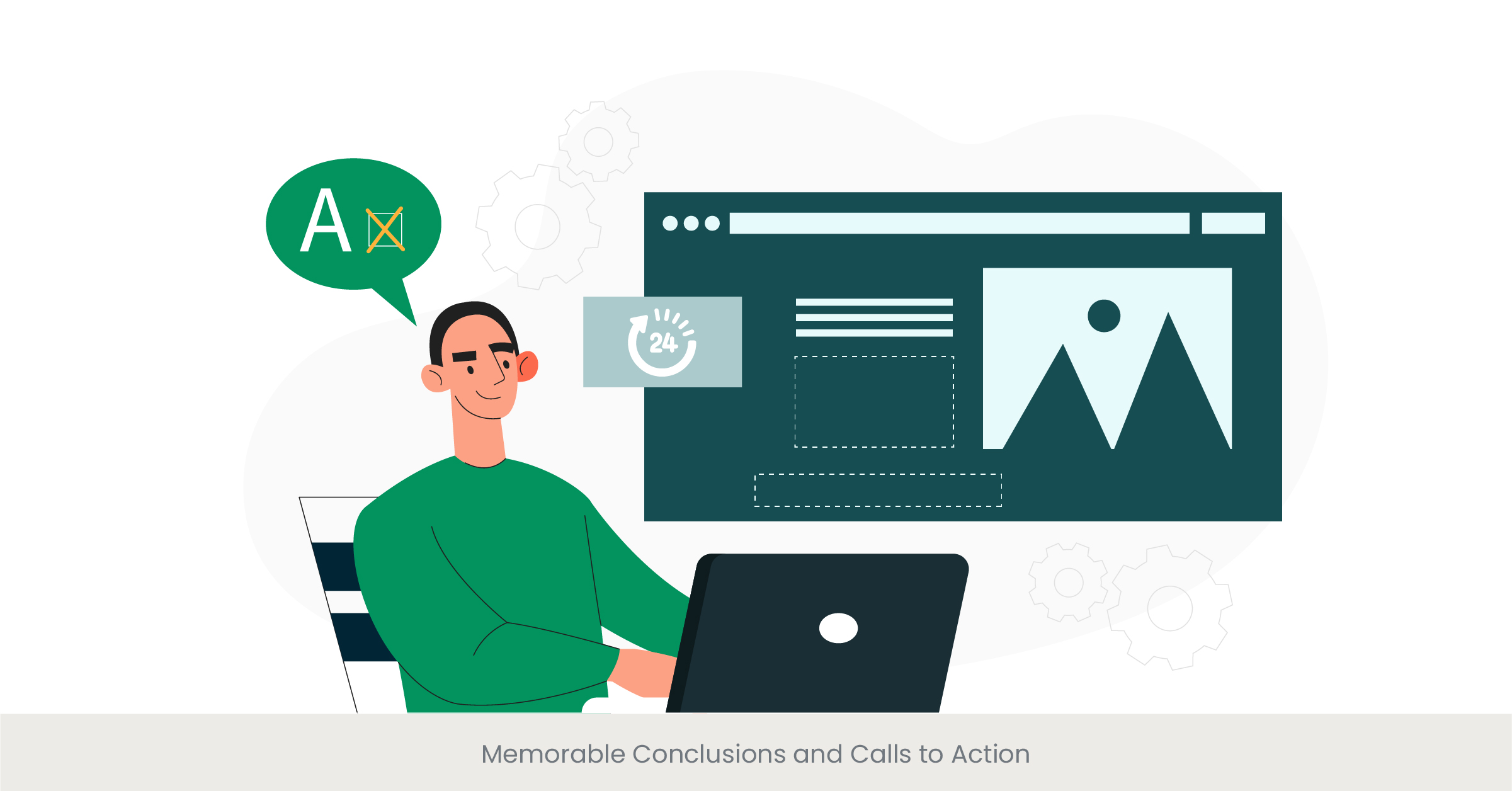
Sealing the Deal with a Strong Finish
A memorable conclusion serves as the capstone point of your presentation, encapsulating the core value proposition and key benefits in a powerful and concise manner. It's your opportunity to summarize the compelling reasons why your solution is the best choice for your audience. This section should resonate emotionally and logically, ensuring that the audience is left with a clear understanding of the impact your solution can have on their lives or businesses.
Crafting a Compelling Call to Action
The call to action is the pivotal moment in your presentation where you guide your audience on what to do next. A compelling CTA is specific, urgent, and aligned with the needs and desires of your audience. Whether it’s scheduling a follow-up meeting, signing up for a free trial, or making a purchase, your CTA should be clear and easy to act on. Providing a clear path forward encourages immediate action and capitalizes on the momentum and engagement built throughout the presentation.
Real-Life Examples: Conclusions That Converted
Success stories abound of sales presentations that have effectively leveraged strong conclusions and CTAs. For instance, a digital marketing agency highlighted their unique value proposition in the conclusion, followed by a CTA for a free strategy session. This approach resulted in a significant uptick in client engagements. Another great example comes from a healthcare company that concluded its presentation by summarizing the life-saving benefits of its product, coupled with a CTA for immediate enrollment in a trial. The clarity and urgency of the message led to a record number of sign-ups.
The Efficacy of Effective Conclusions and CTAs: Supported by Data
The importance of an effective conclusion and CTA is backed by data. Studies indicate that sales presentations with a clear, strong CTA see an average increase of 20% in conversion rates. Moreover, research from the Content Marketing Institute shows that presentations ending with a memorable summary and a direct CTA have higher recall and action rates. This data underscores the critical role of the conclusion and CTA in not only leaving a lasting impression but also in driving the desired outcome.
Frequently Asked Questions (FAQs)
What should a sales presentation include?
A sales presentation should include a compelling opening, a clear outline of the agenda, an engaging narrative that highlights benefits over features, credible data and evidence, effective visuals, strategies for audience engagement, graceful objection handling, engaging manner, and a memorable conclusion with a clear call to action.
What are the 4 types of sales presentation?
The four types of sales presentations are the standard memorized presentation, the outlined presentation, the customized presentation, and the interactive/social presentation. Each type varies in flexibility and audience engagement.
What are the 4 steps of a sales presentation?
The four steps of a sales presentation are: establishing rapport and capturing attention, identifying and discussing needs, presenting solutions that meet those needs, selling, and concluding with a strong call to action.
What are the five elements of a sales presentation?
The five key elements are an engaging introduction, a clear structure, compelling content that combines storytelling with data, visual aids to enhance understanding and retention, and a persuasive conclusion with a call to action.
What do you say in a sales presentation?
Start with a strong opening that relates to your audience's needs or challenges, present your value proposition clearly, use stories and data to support your claims, address key questions and potential objections proactively, and end with a persuasive call to action that prompts the next steps.
How do you structure a sales presentation?
Structure your presentation with a clear beginning, middle, and end. Start with an introduction that hooks your audience, follow with the body where you outline problems and present solutions, and conclude the final step with a summary and compelling call to action.
How do you write a good sales presentation?
A good sales presentation is audience-centered, benefits-focused, well-structured, and includes storytelling and data to support the message. It should be visually engaging and end with a strong call to action.
How do I create a sales presentation template?
Create a template that includes sections for an introduction, agenda, main content (with subsections for problem, solution, and benefits), data and evidence, objection handling, conclusion, and call to action. Ensure flexibility for customization based on the audience.
How to do a sales pitch presentation?
A sales pitch presentation should be concise, focused on the audience's needs, and articulate the unique value proposition clearly. It should engage the audience with compelling storytelling and visuals, and conclude with a specific call to action.
How do you make a sales presentation in PowerPoint?
To make a sales presentation in PowerPoint, start with a clean, professional template. Use slides to outline your main points, incorporate charts and visuals to represent data, and include quotes or testimonials for credibility. Keep text minimal and focus on key messages.


%20(1).jpg)


